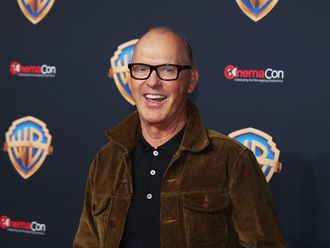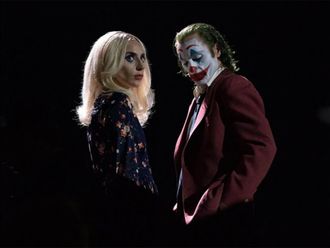
As a mammoth wave from the Arabian Gulf rises up to drown fleeing beachgoers and wash over downtown Dubai and the world’s tallest building, you can be forgiven for thinking you’ve seen this all before.
The coming film Geostorm marks just the latest movie in which Western filmmakers put the commercial capital of the United Arab Emirates in their crosshairs.
The UAE offers a tax-free shooting environment and Dubai’s futuristic, skyscraper-studded skyline as a backdrop. But amid all the computer-generated destruction, viewers are offered only rare glimpses of Emiratis, and learn little about the country or the surrounding region.
“It’s just kind of like this futuristic city that exists only to be destroyed in a very dramatic way,” said Dale Hudson, an associate professor of film and new media at NYU Abu Dhabi. “For audiences in the US used to Hollywood, it’s just another city... It’s not the Middle East, where they assume it’s going to be religious conflict or oppression of women or all the different stereotypes they have. It just kind of normalises it.”
In Geostorm, opening on October 19 in the UAE and starring Gerard Butler, satellites stop all natural disasters until something goes wrong. Dubai is then apparently swamped by the Arabian Gulf, despite the fact that its warm waters are rarely deeper than 90 metres.
Previews for the film show major cities around the world being destroyed. The Dubai Film and TV Commission offered an excited, exclamation-pointed tweet about the footage of the Arabian Gulf tsunami, in which the spire tip of the world’s tallest building, the 828-metre Burj Khalifa, is visible in the background.
The commission did not respond to a request for comment.
It’s not the first time Dubai has featured in a Western blockbuster. Tom Cruise dangled off the side of the newly built Burj Khalifa in the 2011 film Mission Impossible 4: Ghost Protocol. The world’s tallest building escaped being destroyed in that film, but the city-state was engulfed in computer-generated sandstorm of epic proportions.
In 2016’s Star Trek Beyond, Dubai stood in as Starbase Yorktown and was attacked by the forces of the lizard-like dictator Krall. Dubai was again the target of vengeful aliens in the 2016 film Independence Day: Resurgence, in which the gravity-defying extraterrestrials somehow picked up the Burj Khalifa and slammed it into London.
In the case of the Star Trek film, its producers picked Dubai because of its space-age look.
“We came searching for the future and found it,” Jeffrey Chernov, one of the film’s executive producers, said in 2015. However, the cast later acknowledged finding difficulty in casting a husband in Dubai for the character Sulu.
Traditionally dressed Arabs often show up for just a moment in such films. A family dines as a Lebanese-made sports car plunges down an Abu Dhabi skyscraper in Furious 7. But that moment, like a brief reference to Abu Dhabi being a global city on a map in the 2011 plague thriller Contagion, separates the UAE from the “chaos” Mideast stereotype seen in other films, Hudson said.
“It puts (the UAE) on the same political side as London and New York,” he said. “It definitely tries to make to make it a global player.”













